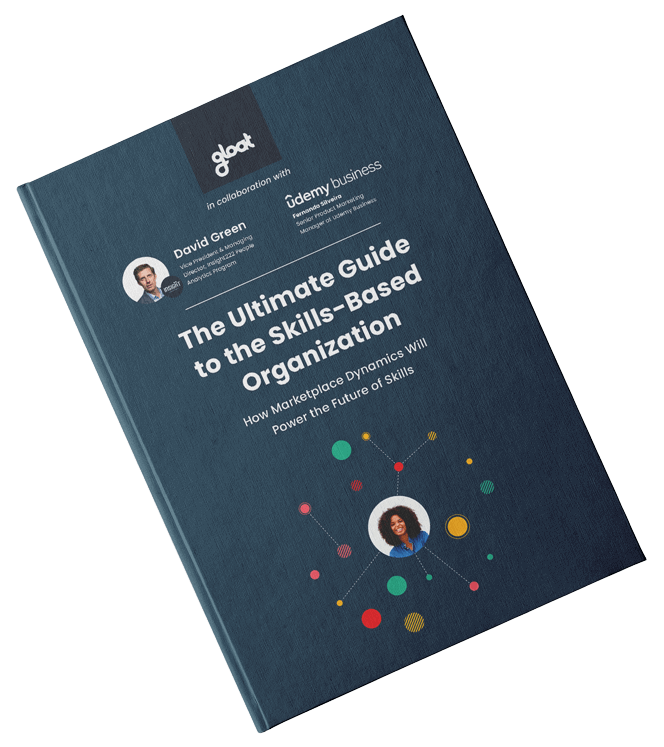5 steps leaders can take to bridge workforce skill gaps
Skill gaps don’t go unnoticed for long. Hiring managers feel the impact when they struggle to find someone with the expertise needed to execute a high-priority project. As deadlines get pushed and completion is delayed, leaders also see the detrimental effects of these skill shortages. At many companies, skill gaps are becoming an increasingly common

Skill gaps don’t go unnoticed for long. Hiring managers feel the impact when they struggle to find someone with the expertise needed to execute a high-priority project. As deadlines get pushed and completion is delayed, leaders also see the detrimental effects of these skill shortages.
At many companies, skill gaps are becoming an increasingly common phenomenon. Nearly 90% of executives claim their organizations either already have skill shortages or that they expect to have them within the next five years. Korn Ferry estimates that this overarching knowledge gap will soon lead to 85.2 million unfilled jobs and $8.5 trillion in unrealized revenue.
Fortunately, leaders don’t have to accept these dismal predictions as their new reality. Instead, organizations can improve their revenue potential and prevent jobs from going unfilled by developing a strategic approach to bridging skill gaps.
The business case for tackling workforce skill gaps
Even as budgets tighten and economic volatility continues, bridging workforce skill gaps deserves a spot at the top of leaders’ agendas. These gaps, which describe the discrepancies between the capabilities workers have and the skills their employers need, make it difficult for managers to find the talent they need to complete high-priority projects—in turn slowing output levels and threatening earnings potential.
As the half-life of skills shrinks and technology evolves, workforce skill gaps will only continue to widen if executives don’t devise a skill-building strategy to combat them. While these gaps may start out as small problems, they typically snowball into much larger shortages that will impact the entire workforce. Some consequences of workforce skill gaps include:
- Delayed productivity
When employees don’t have the skills needed to complete key tasks, they’ll ask their peers or search online to find the answers they’re looking for. This research step will delay internal processes and make it more challenging for managers to meet their project deadlines. - Less innovation
Employees who are struggling to keep up with the day-to-day demands of their job will rarely have the chance to think outside of the box or identify new ways to improve specific processes. Unsurprisingly, skills-based organizations (in which the projects employees take on are determined by the skills they possess) are 52% more likely to innovate when compared to other companies. - Lower engagement and morale
Most employees can tell when a lack of expertise is holding them back from achieving their professional goals. If workers know they have skill gaps but can’t find the resources and pathways to upskills, their morale and motivation is likely to suffer. Their colleagues may also grow frustrated, especially if their own work is impacted by these skill shortages. - Poor revenue performance
As Korn Ferry’s research illustrates, skill shortages will likely hinder a company’s earning potential. In the financial sector alone, a lack of in-demand skills could cause the sector to lose out on annual revenues of $1.3 trillion by 2030.
Getting started: the merits of a skill gap analysis
Before leaders can begin bridging skill gaps, they need an in-depth understanding of where these knowledge shortages lie—which is where workforce skill gap analysis comes into play. Conducting a skill gap analysis can help leaders pinpoint which learning and development initiatives should be prioritized, such as additional technical training to bridge IT skill gaps. Once HR is aware of any skill gaps, they can start to create strategies to overcome existing knowledge shortages—including hiring externally for new skills or redeploying or reskilling internal talent.
Sustainable change: 5 steps leaders can take to close workforce skill gaps
There are a few steps leaders can take to bridge existing skill gaps and help make knowledge shortages a thing of the past. Best practices include:
#1. Create an updated system of record for skills
Traditionally, it’s been challenging for leaders to gain a bird’s eye view of workforce capabilities because skills information is typically siloed into a few different HR systems. Most taxonomies are also out of date, leading to talent strategies that may not address the actual needs of the organization.
Rather than settling for this subpar understanding of workforce skills, companies are harnessing AI-powered tools like Gloat’s Skills Foundation to gain visibility into all of their people’s capabilities. These systems are updated in real-time and pull from an employee’s LinkedIn profile or CV, in turn capturing the full range of knowledge and experience they’re bringing to the table.
#2. Assess how skills stack up
Instead of guessing how your organization’s skills compare to your competitors or attempting to predict what expertise will become more in demand, businesses can use skills intelligence tools like Skills Foundation to put these insights at leaders’ fingertips. Most tools include skill and job benchmarking, which helps leaders understand the market value of a job and identify which skills are on the rise and on the decline.
#3. Identify segments of the workforce to upskill
As innovations emerge and priorities change, there will inevitably be times when employees need to learn new knowledge that no one in the organization possesses. In the past, when these skill needs emerged, leaders often turned to external hiring to bridge the gaps.
However, as talent shortages become more severe and economic turbulence continues, executives are starting to take an internal-first approach to acquire in-demand skills. Tools like Gloat’s Skills Foundation enable leaders to identify employees with adjacent skills who will make good candidates for strategic upskilling and reskilling initiatives.
#4. Give employees access to hands-on learning experiences
While content-based learning is a step in the right direction, employees need a chance to put these lessons into practice—which is exactly what experiential learning opportunities provide. Leading companies are harnessing talent marketplaces to generate recommendations for projects, gigs, and mentorships that employees can participate in, based on the skills they have and the capabilities they wish to hone.
#5. Create a single destination for employee development
Even when leaders invest in pathways for learning and career development, many employees struggle to take advantage of them because these resources are dispersed among a wide array of tools and systems. Since companies have an average of 70 different applications for employee development, there’s often uncertainty about where to go to find various skill-building resources.
Instead of letting siloes and bottlenecks hold people back, leading companies are utilizing an opportunity hub to centralize all volunteering, learning, and training resources—in turn, encouraging all employees to take advantage of them.
To learn more about how to bridge knowledge gaps so you can unlock your workforce’s full potential, check out our guide to becoming a skills-based organization.





